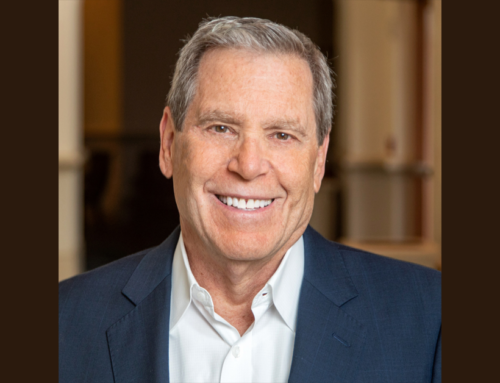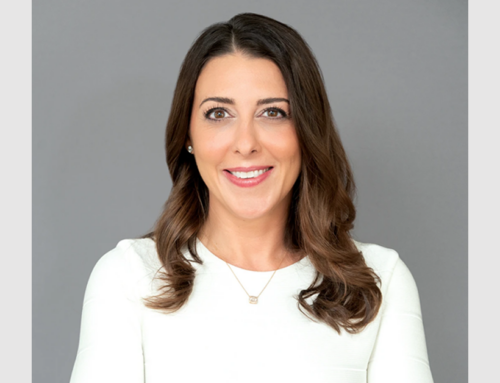The AUM pricing model is prevalent in our industry but in many cases, the pricing is significantly disconnected from the real value being delivered.
Depending on your expertise and your client base, you might add value through tax management or estate planning advice. You might add value by fostering a positive attitude in your clients about investing, talking clients down from the ledge and helping them avoid a bad decision when volatility shakes the market. If you’re working in the life-centered planning space, you might create value by forging life-long relationships that make you indispensable to your clients.
And that’s the rub for our industry: we’re pricing based on investing, and less so on the real value we’re adding. Clients and prospects think they’re paying for portfolio performance, so it’s almost like we’re giving away the planning and advice piece of the pie for free!
So how do we change this backwards structure? How do we price our value?
Matthew Jackson is a director in the financial services division of the pricing consultancy firm Simon Kucher & Partners. He specializes in the area of the psychology of value communication and digital presentment. He also has a Master of Arts degree in classics from Oxford University and holds the Chartered Financial Analyst designation.
In this conversation, Matthew Jackson and I discuss eight different pricing models and how to determine which one is right for you and your clients.
To continue reading, register below.
Quotes from Matthew Jackson
– Price communicates something about your offer. The level is important because that communicates how much you think it’s worth. A watch that’s produced by a high-end Swiss firm would obviously retail at a higher rate than something that’s made very cheaply. But the structure of the price is also important too, because it often indicates how people will use it, or some other aspect about the value behind it.
– AUM works right now because it’s simple, it makes sense. I make you 5%, you give me 1%. Simplicity is great. You’ve got a model that works, but may not continue to work. You’ve got value being delivered, which clients may not actually understand is being delivered, and they may be focusing on something different. Just making a quick, simple change, is going to be difficult. It’s going to be probably more of an evolution. I think the preoccupation of a financial advisor should be “What is the segment that I am targeting going to do next, and how quickly are they going to do it, and therefore, how quickly do I need to move?”
– Part of the problem is there’s never really been a movie about financial planning. People don’t know what it is. It doesn’t lend itself as easily to quantification as capital markets-based value propositions do. And there’s a whole host of issues around it. I think none of those issues is insurmountable, but I think we’re only at the start of the journey. Personally, I have a problem with the word “planning.” I think it sounds dull, and something that sounds dull does not command a high willingness to pay. I think that there needs to be a reinvigoration of the language used to describe financial planning.
– The quantification of the value is a problem that no one’s answered yet. I think that a lot of greater terms have been made to show, for example, behavioral alpha, the advantage of having a human advisor just on the investment side, to stop you from doing stupid things. You could think about time saved, you could try and quantify it that way, if that’s what the proposition is. But, it doesn’t always have to be quantified for the customer. You do, however, have to quantify it for yourself. I think that’s a big opportunity for a lot of great advisors. You need to know that the time that you’re devoting to that client is being remunerated appropriately. I think that the mismatch between the revenues that you’re getting from a client and the services you’re giving to them, which is inherent in a sort of all-in price model, is a quantification problem, which advisors need to get on top of very quickly.
– I think some people might regard financial advisory as a luxury. The reality is that it should be a staple. For everyone. Probably the reason we’re seeing price competition is because there is insufficient ability of clients to differentiate between providers. If you had a well-differentiated market, people would say “Well, if you pay 30 basis points, you’re going to get a Walmart service. Whereas, if you really want the white glove service, you need to go all the way to 100 basis points.” I don’t think that’s sufficiently clear to clients at the moment. Really, you can get a luxury service for a bargain basement price. That’s a failure of value communication on the luxury provider.
– A real issue with the AUM model is how do you regulate how much time that you spend with different clients, if it’s on a call me when you need me basis? Suppose you did want to manage your hours with certain clients. How would you explain to a client that they can’t see you if they’re not paying enough, because you never said there was a link between what they were paying and what they were getting? Mark Berg at Timothy Financial actually came up with his hourly rate to deal with this precise situation. Somebody would walk in and say, “Look, I only want to deal with you because you’re the founder, and I just want the top brass.” He said, “No problem. My hourly rate is $400. I do have a partner that I work with who’s $275, and I think he’d be able to meet your needs perfectly. It’s up to you.” It turns out, in a lot of those situations, the client says “You know what? If you think he’s good …” It’s a great way of communicating value, and regulating your time.
– Carolyn McClanahan wants to link price to value, and she doesn’t see the asset management component as being a huge contributor to it. She said “Let me see how I draw a link between the value I can add to the complexity of your situation, and then the price you pay?” She’s come up with a way of asking clients a set of questions which you can boil down to how complex your life is, and also how fragmented your accounts are. Somebody with $100,000 spread across 10 accounts is obviously going to be more work than a client who has it all sitting in just a checking account. She’s really gone back to basics and said “How do I know how much effort you require from me, and what does that mean in terms of fixed fees?”
– What’s interesting about Jude Boudreaux is his approach to clients with a decent stack coming in every month, but certainly not a huge pool of liquid assets that they’re looking to invest somewhere. They will generally have more debt than assets, or at least have significant debts. In other words, the AUM model just doesn’t work. The assets aren’t there, or they’re not liquid. But, on the other hand, you do have a decent amount of money in the form of income. Jude uses a percentage of net income as one of the drivers of price. It’s still dollars at the end of the day these clients are paying, but the way it’s framed is tailored to the client’s segment. It also, of course, enables Jude to serve them profitably.
– I think Steve Lockshin of AdvicePeriod has managed to pull off a revolutionary concept, which is also really, really commercially viable as well. He says “Look, I’m not going to even touch your assets, the investment management isn’t even part of my value equation.” Then people say “Yeah, but if you just charge for planning, then you’re only going to make small potatoes. It’s going to be a few grand, or maybe 50 bucks per month.” He says “Actually, no. I’m going to charge you the full extent of my value, which, by the way, is around $600,000-$700,000, and it’s going to be cheaper than what you would pay to a traditional provider at an investment bank.” It’s brilliant on so many levels. It smashes these myths and misconceptions, and it links price directly to value because it’s not asset based. He has spotted a flaw in the ultra high net worth space, that if you charge based on basis points, that fee is going to be enormous, and it’s not necessarily going to be related directly to the value that the client’s getting. He can win every time with that argument. I suppose the caveat is you need to be like Steve to do exactly what he does, and what he has is, to use the Liam Neeson quote, “A very specific set of skills.” Which makes him a nightmare for people like Goldman Sachs.
– How do you ensure that the communication doesn’t get in the way of a great pricing model, or a great proposition? It really boils down to curating that final mile where the client has to figure out what the options are, figure out the difference between the options, and therefore which one is right for them, make the link between the value of the option and the price that you’re charging, and then figuring out how to proceed. In other words, the proposition that maps onto the segment or segments it’s built for, a pricing model that maps onto the proposition, and the way the proposition’s constructed and delivered. The proposition needs to come first, and then the pricing, and then the presentment.
Resources
– Simon Kucher & Partners Visit Matthew Jackson and his team online.
– “The Future of Fees” Matthew Jackson discusses eight new pricing models financial advisors should consider.
– “The E-Myth Revisited” by Michael E Gerber Matthew Jackson believes this classic book has some very timely lessons for the financial services industry about pricing.
– “Symposium” by Plato A different kind of “classic” from Matthew’s Oxford days that you can sample for free. Matthew recommends the dialogue on Love, which taught him to recognize his personal limitations and value working with others.
– #1 independent advisor Steve Lockshin on his unusual path to success My conversation with Steve includes actionable items you can implement today to raise your game.
– Here’s How Multibillion-Dollar RIA Firm Advice Period is Reinventing Wealth Management My conversation with Steve Lockshin’s partner, Larry Miles.
– The ROL Index A tool Mitch Anthony and I developed to help advisors measure their clients’ well-being in 10 aspects of life.
– Values Clarification Toolkit Click here to download this FREE tool and start living your values.





